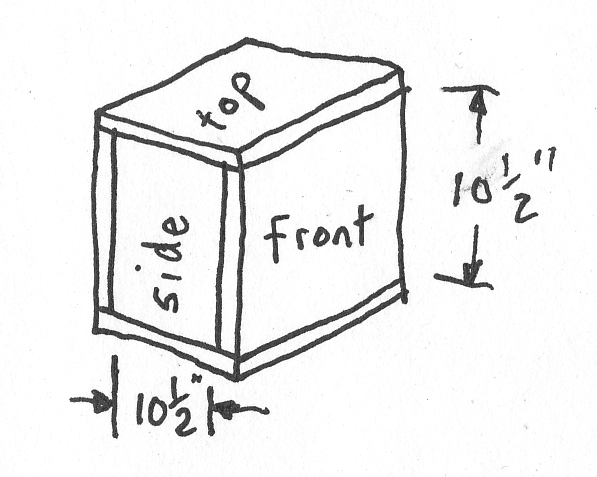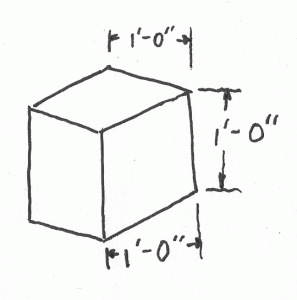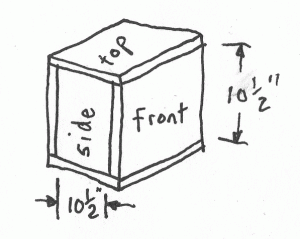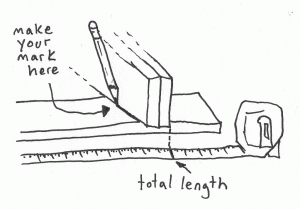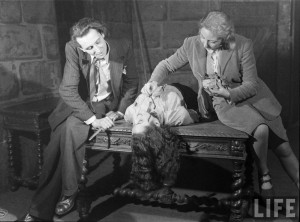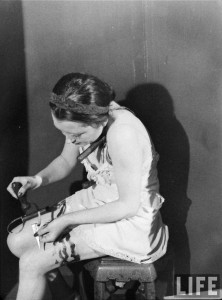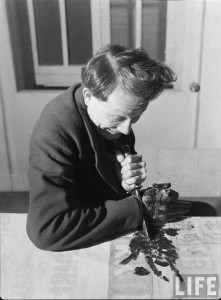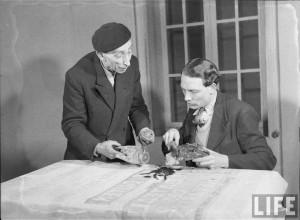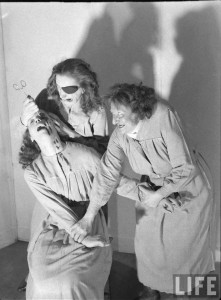It happens. It’s rare, but it happens. You get to work or your studio, and nothing is happening. You have no upcoming projects, the phone isn’t ringing, your emails are all answered, and you have no meetings. It is especially prevalent this time of the year, when half the country seems to be out of town or hunkered down in their homes for the holidays. You can spend all day watching Netflix, or you can take advantage of the downtime with some things you never have time for but which will improve your shop and skills in the long run. Here are some of my favorites.
Clean. I know you clean your shop every day (right?). And you probably do a big clean every week (when you have time). Still, there always seems to be something dirty in your shop no matter how often you clean, so here’s your chance to empty the vacuum cleaner, scrape the paint traps, and dust the tops of the chandeliers.
Maintenance. I’m talking about sharpening the chisels and oiling the pneumatic staplers. All tools require some maintenance, even if it’s only needed once or twice a year. If you don’t know the current state of your tools, now is a good time to check each one and make a list of what needs fixing and what needs replacing. It’s also a good time to get rid of those random tool parts from tools you no longer have that every shop somehow accumulates (or put them in your big bin of “found objects to use as prop parts”).
Organize. I don’t mean to imply that your shop isn’t already the paragon of proper organization. It doesn’t hurt to check all your bins of bolts to make sure they only contain the right sizes and cull out all the random bits that have found their way into the wrong drawers. While you’re at it, make sure you can close all the drawers; if one seems to be constantly overflowing, now is a good time to think of a way to divide up the contents and reorganize your hardware. It is also a good chance to take stock of how your supplies are faring and whether you need to order anything new (if your shop doesn’t have someone who does that).
Learn a new skill. This is one of my favorites. No matter how advanced you are, there is always something in the world of props that you’ve never quite mastered. Maybe it’s an artisan skill, such as welding or fabric draping, or maybe you just want to brush up on Excel or CAD. It’s your choice whether you want to just practice or if you want to take on a whole project utilizing your new skill so you have something to show for it at the end. If you’re feeling especially ambitious, you can undertake an improvement to your shop, such as building new shelves using a saw you haven’t used before.
Tinker. Closely related to learning a new skill is tinkering. Maybe you want to experiment with different ways to pull of an effect which didn’t quite work in your last show, or maybe you just want to check out some new blood recipes you found on the internet. The world of props has a whole host of tricks and effects which can always use improving. Perhaps you can finally solve the problem of making a cell phone ring on cue.
Read. If you know what shows are coming up in your season, you can get a jump on them by reading the scripts now. When we’re in the thick of it, it can be hard to read a script for fun without stressing over every prop that is mentioned in it (all the needles just fell off the Christmas tree at once! How am I going to pull that off?). Alternatively, you can peruse the books on your shelf or look up information in other places about the time period of your upcoming plays to make yourself more informed about the context. Even if you don’t have any shows you want to prepare for, the prop master has an endless supply of reading material which can inform his or her profession. And hey, if you’re really bored, why not look through the archives of my blog to catch up on any articles you may have missed?
Scout new sources. Maybe being in the shop is the last thing you want to do when there is nothing going on. If you don’t have to be there, now is a great time to check out stores, flea markets and other suppliers that you otherwise haven’t had the chance to. It is especially nice this time of the year, as the throngs of holiday shoppers have gone home and discounts can be found.
Portfolios. A props person should always have an up-to-date portfolio, even if one is not actively seeking employment. A lull between shows is a good time to make sure of this.The least you can do is gather all the photographs you can find of past shows. Portfolios aren’t just for individual artisans; it’s a good idea to have a “shop” portfolio as well.You can show off what your shop has done in the past to tours which come through, or in presentations to groups, or at conferences such as USITT. It also doesn’t hurt to brag on your accomplishments to your bosses and the higher-ups every once in awhile. Even if you can’t think of a specific reason to keep a portfolio, you don’t want to be caught in a situation where someone asks to see examples of your shop’s work and all you have is a dusty photograph from a 1982 production of Christmas Carol.

